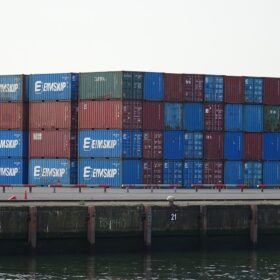Texas’ electricity market, managed by independent operator Electric Reliability Council of Texas (ERCOT), is unlike any other in the United States. Representing ~90% of the state’s electrical load with more than 46,000 miles of transmission lines, it operates as a standalone, energy-only market. Power plant operators and independent power producers earn revenue exclusively from energy sales and ancillary services, as there are no capacity payments to stabilize cash flow.
This design creates volatile market conditions with significant risks and high-reward opportunities.
Strategic risk management
Texas developers face a distinct set of regulatory, operational, and market risks that can derail even the best designed projects:
- Land Rights Complexity: Overlapping oil and gas operations create unique complications through surface use agreements, mineral rights, and existing lease structures. Early stakeholder engagement and comprehensive title research reduce timeline risks.
- Interconnection Cost Structure: ERCOT’s “connect and manage” approach socializes transmission costs while accepting curtailment risk, creating different financing considerations than markets with direct cost assignment.
- Revenue Volatility: Energy-only market structure requires robust financial planning for extreme revenue swings and scarcity event variability.
- Regulatory Evolution: Public Utility Commission of Texas (PUCT) oversight creates ongoing policy risks. Post-Winter Storm Uri reforms show how extreme weather drives fundamental market changes affecting ancillary services, pricing, and reliability mandates.
- Weather-Driven Risk: Texas climate extremes create revenue opportunities but operational challenges, with ERCOT’s islanded grid requiring resilient design.
Developers and EPCs must consistently monitor PUCT proceedings and design projects with the operational flexibility to adapt as ERCOT’s market design evolves in response to extreme weather events and load growth.
Critical success factors
With rapid load growth projections and hundreds of gigawatts competing for interconnection, developers face unprecedented opportunities and intense competition. Success depends on:
- Market Structure: Understanding ERCOT’s energy-only design enables revenue optimization strategies that turn market volatility into a competitive advantage.
- Technical Integration: System design choices directly determine revenue capture capability and operational flexibility.
- Strategic Location Selection: Siting based on transmission constraints, curtailment risks, and congestion patterns significantly impacts long-term project economics.
- Risk Management: Proactive regulatory monitoring and adaptive operational strategies protect against ERCOT’s rapid market evolution and policy shifts.
As ERCOT’s market continues evolving with growing renewable penetration and load increases, developers equipped with these strategic frameworks will consistently capture premium value. To learn more – including case studies comparing ERCOT and CAISO markets and practical design and revenue-stacking guidance – download the free playbook here.
This content is protected by copyright and may not be reused. If you want to cooperate with us and would like to reuse some of our content, please contact: editors@pv-magazine.com.









By submitting this form you agree to pv magazine using your data for the purposes of publishing your comment.
Your personal data will only be disclosed or otherwise transmitted to third parties for the purposes of spam filtering or if this is necessary for technical maintenance of the website. Any other transfer to third parties will not take place unless this is justified on the basis of applicable data protection regulations or if pv magazine is legally obliged to do so.
You may revoke this consent at any time with effect for the future, in which case your personal data will be deleted immediately. Otherwise, your data will be deleted if pv magazine has processed your request or the purpose of data storage is fulfilled.
Further information on data privacy can be found in our Data Protection Policy.